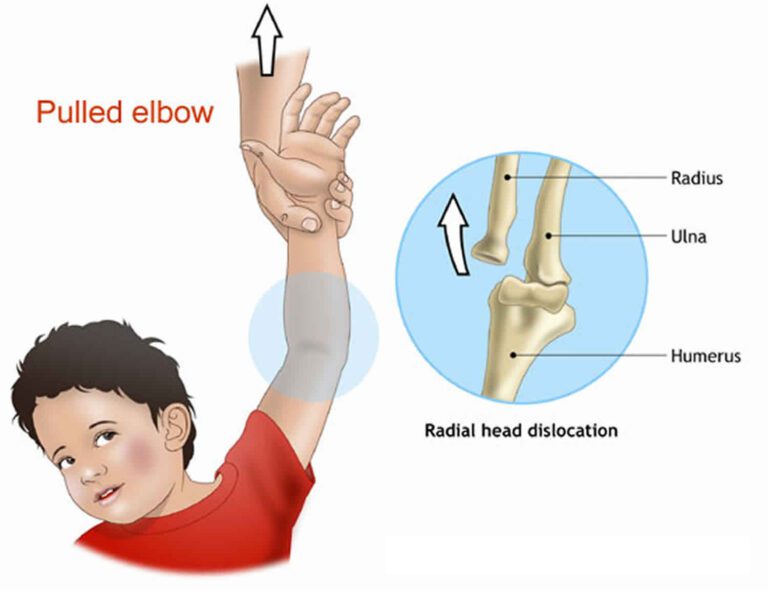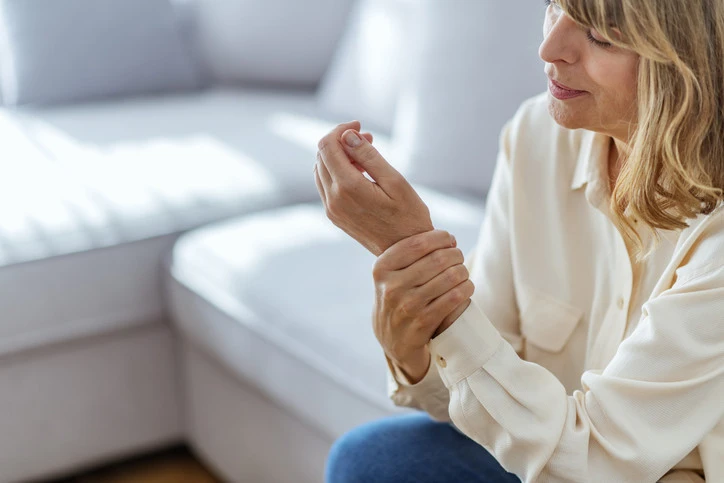How to cure muscle pain in the thigh?
When you feel difficulty in running, walking & climbing stairs, it is indicated to you feel the pain in the thigh. This Thigh pain is produced for too many reasons like after trauma & an injury. But sometimes it occurs due to apparent reason. You also feel Numbness, tingling & also feel to weakness in the thigh. This pain is reduced by medication, the rice principle & physiotherapy treatment.
Table of Contents
What are Parts of the Thigh?
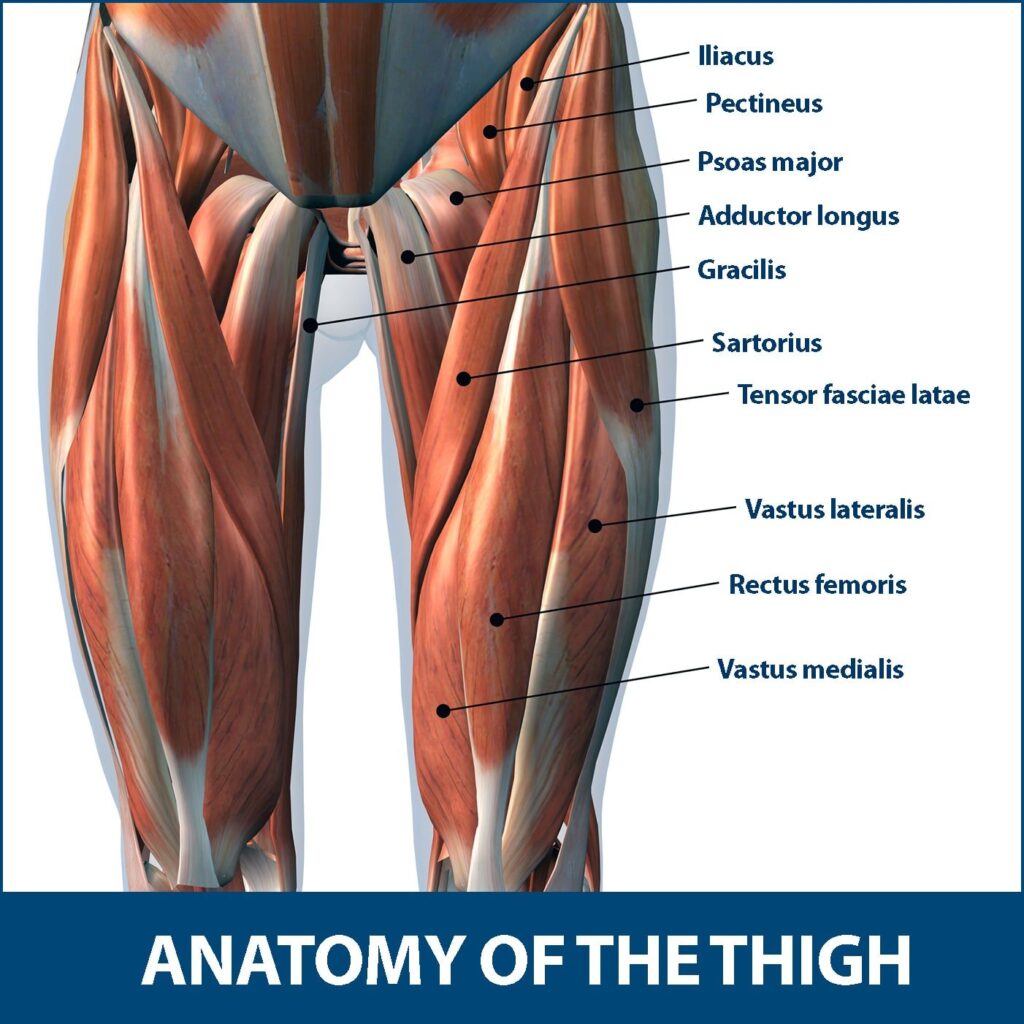
First, we try to know about to thigh.
- The thigh is the area of the upper leg that is located between to hip joint & knee joint.
- In the thigh consists of the several parts like as :
- First of the quadriceps muscles which are located in the front of the thigh. which is allow to you straighten the knee joint & bend at the hip joint.
- The hamstring muscles are located on the backside of the thigh which is allow to you bend to the knee joint.
- Groin muscles are located on the inner part of the thigh which allows you to pull the leg toward the abdomen.
- The hip muscles, like the gluteus medius, which pull the thigh out to the side.
- In the thigh include to three major nerves & their branches.
What are the Causes of Thigh Muscle Pain?
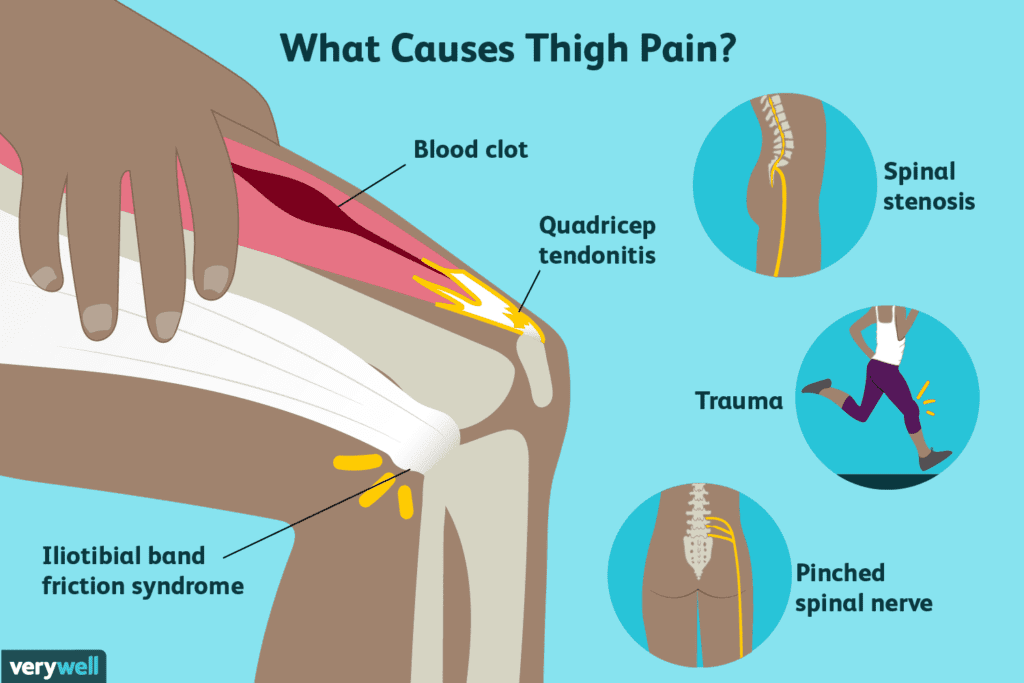
- Pinched Spinal Nerve:
- When in your body occur to Both herniated lumbar discs & low back arthritis which is a pinch on the nerves which is the exit from to spinal column & travel down on the thigh, give to the result the thigh pain.
- Spinal Stenosis:
- This condition is considered a degenerative condition which is become to worsens over time.
- Most the people it occurs over the age of 40.
- This condition occurs when the spinal nerves are compressed by the bones in the spine. which is given as to result of daily wear & tear experienced throughout life.
- Trauma:
- When occur to Any sort of the traumatic blow to the thigh
- Is become too painful, because, many muscles & nerves are located in the thigh.
- Quadriceps & Hamstring Tendonitis:
- When you do the Overuse &repeated stress to the thigh muscles which is produced to inflammation in the muscle tendons.
- Due to tendonitis, you feel swelling & tenderness on the thigh muscle.
- Iliotibial Band Friction Syndrome:
- Iliotibial band is a thick piece of the tissue & fascia that is located on the outer side of your thigh.
- Sometimes this band becomes too irritated with the overuse & repeated stress which also leads to thigh pain.
- Stroke:
- Sometimes, when to occur a cerebral vascular accident (CVA), it becomes to causes abrupt pain in the thigh.
- Blood Clot:
- A blood clot in the lower leg/thigh is become to causes thigh pain along with the warmth, swelling & redness.
- Meralgia paresthetica:
- In this condition occur to pressure on the lateral femoral cutaneous nerve.
- This condition occurs to many causes include to :
- Pregnancy
- Being overweight or obese
- Hypothyroidism
- Carrying a wallet or cell phone in the front and side pockets of pants
- Scar tissue from a past injury or surgery
- Tight clothing
- Deep vein thrombosis:
- When you appear more frequently deep vein clots in the lower legs, which also lead to thigh pain.
- Greater trochanteric pain syndrome:
- Greater trochanteric pain syndrome is produced by pain in the outside of the thighs.
- this syndrome is occur typically caused by injury, pressure & repetitive movements.
- this is a common occurrence in runners & women.
- Muscle injuries:
- Muscle injuries, like sprains & strains, which is become the common cause of pain in the upper thigh.
- Because of many large numbers of muscles in the upper thigh, that pain in this area occurs due to a muscle injury.
- Some common muscle injuries are in this area include:
- Muscle sprains & strains:
- Sprains & strains affect any of the many muscles, ligaments & tendons in the thigh.
- A sprain = is a torn & stretched ligament & these Ligaments connect bones to other bones.
- A strain = is a torn & stretched muscle & tendon & Tendons connect muscles to bones.
- Sedentary lifestyle:
- If you are not doing enough exercise & spending your too much time in sitting position each day which is lead to damage the muscles & produce to chronic pain.
- When you Sit for long periods which is put pressure on the joints & muscles, particularly on the hips & legs.
- Lack of activity of the leg is lead to muscles weakness & triggering widespread muscle pain.
- In People who have to suffer from upper thigh pain due to a sedentary lifestyle so that this pain is felt throughout the body.
- Radiating pain of the another injury:
- If occur to Injuries in other areas of the body which is produced to pain & spread into the upper thighs.
- Chronic conditions:
- Some Numerous chronic conditions are produced by pain in the upper thigh.
- If in the People present with fibromyalgia which is experiencing chronic widespread pain at the specific pressure points
What are the Symptoms of the Thigh muscle injury?
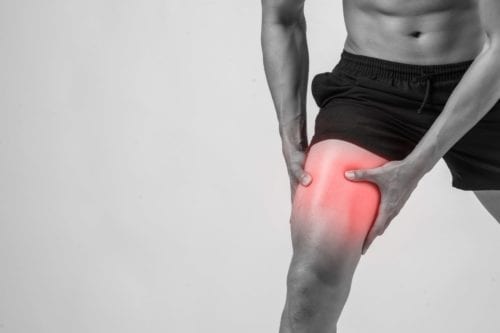
- First, you feel the pain in the front & back of the thigh
- You are seen swellings & redness in the area of pain.
- Also, present feeling of the spasms & tightness in the area of pain.
- You also feel Numbness & tingling in the thigh
- Weakness feel in thigh muscles
- You feel Difficulty in the sitting position & rising from the sitting
- You also feel difficulty in walking, leg raises & wall squats,
- You are also seen bursting in the area of pain.
- The burning sensation is also felt in the area of pain
- You also see a pale or bluish discoloration on the area of pain.
In which condition you will contact to doctor?
Many people with thigh pain can treat the pain on their own, while other people need medical attention right away.
- Some signs and symptoms which is a warrant a visit to a medical professional include:
- When you feel Severe pain which limits the ability to function.
- When you feel having difficulty walking normally due to your pain.
- When this Pain occurs with the fever & malaise, it is a sign of the infection.
- When you feel Thigh pain with redness, swelling & warmth of the skin, it is a sign of a blood clot that requires immediate medical attention.
- When occur to muscle strain & tear which is produced to thigh look deformed so a visit to an orthopedic surgeon is needed to the accurately diagnose & treat the condition.
- Thigh pain which is coming on suddenly & limits the ability to walk due to a pinched nerve in the back. so that visit to an orthopedist who has diagnosed this condition.
- When you experience any of the following symptoms, that goes for the medical treatment:
- Clammy or bluish skin
- Irregular heartbeat
- Fainting
- Lightheartedness
- Restlessness
- Weak pulse
- Shortness of breath
- Anxiety
- Rapid heartbeat
- Chest pain which extends into the arm, jaw, neck & shoulder
- Spitting up blood
What is the Diagnosis of the Thigh muscle Pain?
When you contact the doctor, the doctor must follow the assessment.
- The first doctor asked questions about the pain & try to know the reason for the pain.
- On the observation, the part observes the swelling, redness & color changes in the area of pain.
- On the palpation part, palpate to swelling & spasms.
- On the examination part, examine the ROM & strength of the muscle of the thigh.
- After that assessment doctor advised proper treatment of the muscle pain.
The doctor is also advised to some Diagnostic Tests for diagnosis :
- X-ray:
- This Diagnostic test is used to examine the bones of the thigh, knee & hip joint to look for the fractures & arthritis which is the cause of the pain.
- Electromyographic (EMG) test:
- The EMG test is used to check the functioning of the nerves of the thigh.
- This test is also shown to a pinched nerve & loss of nerve function.
- Magnetic resonance imaging (MRI):
- This test is used to show the pictures of the soft tissue around the thigh.
- It also checks the tear of muscle or tendon.
- Ultrasound:
- This test is used to visualize arteries & veins around the thigh.
- This test also checks the blood clot.
- Blood tests :
- It is helpful to assess for medical conditions like arthritis.
- Joint aspiration:
- It is a procedure that involves removing fluid from a joint & check for certain joint problems
What is the treatment for thigh muscle pain?
RICE principle :

In the starting phase of the pain, the doctor has advised to you RICE principle for pain release.
- R- rest = When the muscle pain starts the first doctor advises to rest for some days & do not an activity that increases the pain in the thigh, as for walking you are used to a walking aid reduce to the pain.
- I – ice = You can also apply ice on the area of pain for 20 minutes & release to pain & swellings, you can also use to ice pack & frozen peas release to the pain but you can not apply to direct ice on the skin because redness occurs in the skin so that use to towel between ice & skin.
- C- compression = You can also apply to compression bandage on the area of pain for release to swellings.
- E- elevation = You can elevate the leg for release to swelling with the help of a pillow on the foot.
Pain Medication:
- Your healthcare provider is also prescribed an anti-inflammatory drugmainly NSAIDs with Advil – ibuprofen & also applied to an anti-inflammatory cream like Aspercreme for release to muscle pain.
- For the inflammation, the doctor is advised to Tylenol – acetaminophen for release to inflammation.
Heat therapy:
- You can also Apply heat which is helpful to you after visible signs of the inflammation go away & for the chronic conditions involving muscle & joint stiffness.
- The heat helps you relax tense muscles & increase the blood flow to promote healing.
- This Heat therapy is applied for 10 to 15 minutes at a time.
- You can also try a heating pad, even a warm bath & an over-the-counter heat wrap Remove the heat if you feel discomfort and avoid burning the skin.
What is physiotherapy treatment for thigh muscle pain?
The physiotherapy treatment includes Acupuncture Therapy, Massage Therapy, electrotherapy, stretching & exercise which help you release muscle pain & swelling.
Acupuncture Therapy:
- During this Acupuncture Therapy session, a licensed acupuncturist determines the affected meridian causing thigh pain. Then, the acupuncturist is place very thin needles into the top layer of the skin which are applied at specific points on the body to restore the healthy flow once again.
- This therapy helps you reduce trigger points & muscle pain.
Massage therapy:
- This therapy helps you release thigh pain by improving the circulation, relieving tension & smoothing the out muscle knots.
- This massage is applied to trigger & tender points of the muscle with the help of oil & powder for 5 minutes.
- This massage is applied 3 times per day.
Stretching:
Stretching is helpful to you for releasing the muscle tightness & muscle pain:
- Hip Flexor Stretch
- Standing Hamstring Stretch
- Adductor Stretch
- Calf Stretches
- Lying Hamstring Stretch.
- Leg Stretches.
- Supine Adductor Stretch with Strap
- Seated Figure Four Stretch
- Crossover stretch
- Butterfly stretch
- Kneeling Hip Flexor Stretch
- Prone Quad Stretch with Strap
- Seated Hamstring Stretch
- Quadriceps Stretch
- Inner and Outer Legs Stretch
- Shin stretch

Hip Flexor Stretch:
- The patient is Stand upright.
- Step forward with you the right leg.
- Slowly bend the right knee joint & must keep the left leg straight.
- Then Continue to bend the right knee till a gentle stretch is felt on top of the thigh.
- Must be Avoid arching the back as the bend into the front leg.
- Hold this stretching position for 30 seconds.
- Then Return to the starting position.
- Then repeat this stretching 3 times per day.

Standing Hamstring Stretch:
- The patient is Stand upright.
- Then Bend over & attempt to touch the toes while keeping the knee joint straight.
- Try to Continue straight till a gentle stretch is felt behind the knees.
- In this stretching position Hold for 15 to 30 seconds.
- Then Return to the starting position.
- Repeat this stretch 3 times.
- But Stop this stretch when you feel any low back pain & increased pain in the hamstrings muscle.
Adductor Stretch:
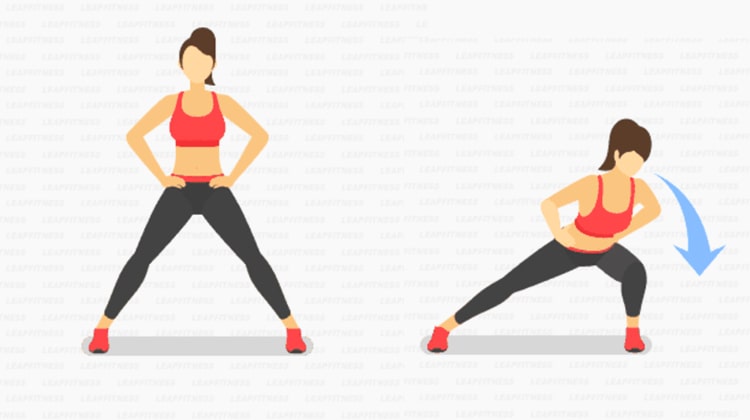
- The patient is Stand upright for the stretch.
- Then Spread the legs are shoulder-distance apart.
- Slowly lean to the right while bending the right knee.
- Must be Keep the left leg straight.
- This position is Continue till a gentle stretch is felt in the inner left thigh.
- Hold this position for five seconds.
- Then Return to the starting position.
- Repeat this stretching 3 times.
- Then Perform this again, leaning to the left.
- But in the stretching, a comfortable pull is felt. Stop this stretching if you feel any pain.
Calf Stretches:

- The patient is Stand at arm’s length from a wall.
- Put both hands on the wall, shoulder-width apart, then take a step back with the one leg, while keeping a pushing motion against the wall.
- Hold this position for 20 to 30 seconds.
- Then Release & repeat with the other leg

Lying Hamstring Stretch:
- The patient is lying on the back on the floor.
- Then Slowly lift the one leg & hold it extended upward.
- Pull-on the hamstring so that the leg raise is at a 90-degree angle from the torso & bend the leg at the knee.
- Hold the position for 30 seconds, then repeat this stretching with the other leg.
Leg Stretches:
- The patient is Sitting on the floor with both legs stretched out in front of the body.
- Keep a straight posture & place the hands on the floor for stability.
- Slowly bend the one knee to a 90-degree angle.
- Hold the position for 30 seconds.
- Stretch out the same leg & keep it straight for 30 seconds.
- Then do the same thing with the other leg.
Supine Adductor Stretch with Strap:

- The patient is lying on the back with both knees bent & feet flat on the floor
- Grab the stretch strap & place it around the ball of the foot of the leg want to stretch.
- Hold this strap with the opposite hand.
- First, straighten the knee toward the ceiling & adjusting the angle as needed if the hamstrings are too tight
- Let the leg fall out toward the side toward the floor as far as possible, with the inner thigh is facing up toward the ceiling
- Support the leg with the strap, moving till feel a strong inner thigh stretch
- Hold for this stretching 30 seconds for the 2-3 sets
Seated Figure Four Stretch:
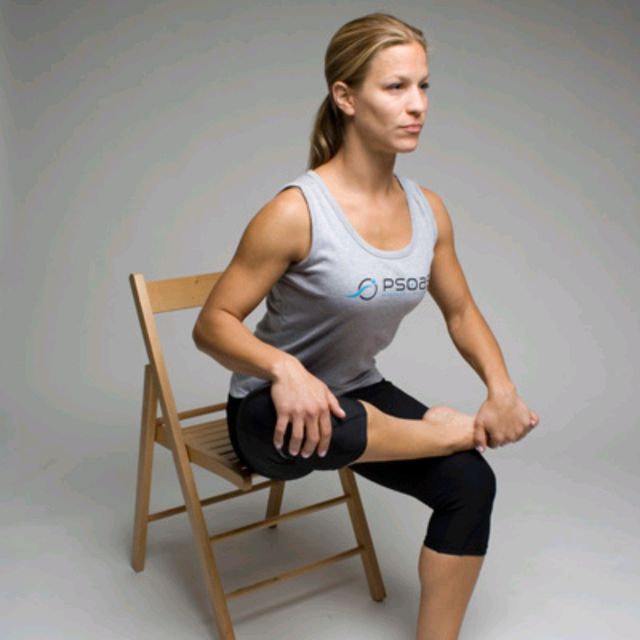
- The patient is Sitting comfortably in a chair near the edge & with good posture
- First Decide which hip joint the patient is going to stretch & bring the ankle of that leg up toward the opposite knee joint.
- Then Rest the outside edge of the ankle on the opposite thigh near the knee joint.
- Let the top knee joint fall down toward the floor as far as the patient is tolerating
- Then, gently lean forward till they feel a stretch deep in the buttock piriformis muscle
- Hold this stretching position for 30 seconds to do the 2-3 sets on each leg
- If the pain is felt in the ITB area, you can try to bring the knee joint across the body toward the opposite side of the chest instead of getting a stretch in the side of the thigh area.
- The patient has also completed this stretch in lying down.
Crossover stretch:
- The patient is Start with the feet together, then step to the left with the left foot.
- Cross the right foot in front of the left leg.
- Step to the left again with the left foot, & bring the right foot to joint with the left foot.
- Once both the feet are together & repeat this stretch in another direction.
- This stretching is start slowly but picks up the pace as they get used to the move.
- Must be Try to continue for at least 2 to 3 minutes
Butterfly stretch:

- The patient is Sitting on the ground & places the soles of the feet together in front of the body.
- Let the knee joint bend out to the sides.
- Place the hands on the feet as they pull the heels toward the body.
- Must be Keep the back straight & abs engaged as the patient let the knee joint relax & inch closer to the floor.
- The patient feels slight pressure on the groin muscles.
- Breathe deeply & hold this position for 15 to 30 seconds.
- Repeat this stretching position 3 times.
- Move the feet closer to the groin for a more intense stretch.
Kneeling Hip Flexor Stretch:
- The patient is Starting in a standing position by getting into a lunge position, with the hip joint wanting to stretch in the back.
- Then, let the back knee rest on the ground, using a pillow/rolled towel as needed for comfort
- Make sure the front of the hip joint & knees are bent to approximately 90 degrees with the knee staying behind the toes
- Next, shift the weight forward into the front foot as the further extend the back hip which is Shifted till a strong stretch if felt & hold
- Hold for 30 seconds & 2-3 sets per day.
Prone Quad Stretch with Strap:
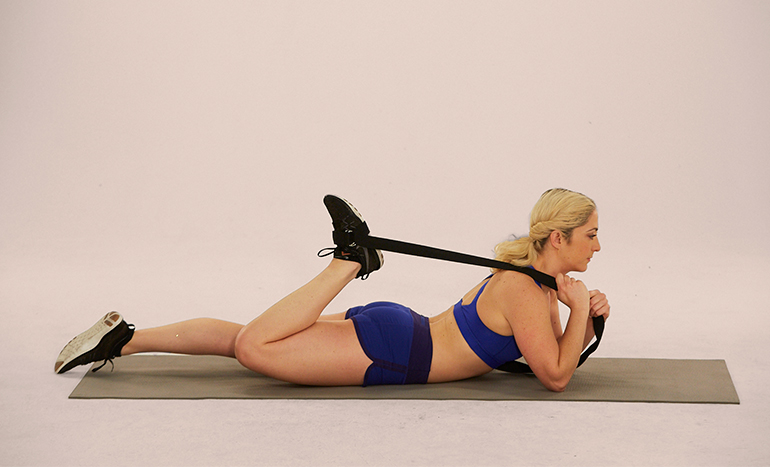
- The patient is lying on the stomach means a prone position with the stretch strap wrapped around the foot of the leg.
- Then Hold the ends of the strap with the hand on the same side
- First Get in a neutral position with the whole body, with the head facing forward & down toward the floor
- Start to bend the knee joint & using the strap to guide the movement or provide overpressure
- Stop this stretching when the patient feels a strong stretch in the front of the thigh,
- Hold this position for 30 seconds for the 2-3 sets.
Seated Hamstring Stretch:
- The patient is Sitting comfortably in a chair with a good upper body posture
- Then Straightening the leg & resting the heel on the ground with the toes up toward the ceiling & knee joint straight.
- Start to gently shift the weight forward while must keep the spine straight.
- Then Continue shifting till the patient feel a stretch in the back of the leg
- Hold this position for 30 seconds & complete 2-3 sets on each leg
Quadriceps Stretch:
- The patient is in a standing position.
- Then Hold onto a wall & chair for balance.
- The patient is standing on one leg & lifts the opposite leg off the floor.
- Then Gently bend at the knee joint & pull the foot up close to the buttock.
- Hold this stretching position for 30 seconds & repeat with the opposite leg.
Inner and Outer Legs Stretch:
- Begin with the feet facing forward, shoulder-width apart.
- Step out to lunge to the left, bending the knee to 90 degrees without allowing the knee to go past the toes.
- Lower into the left side & straighten the right leg.
- With the back straight, place the hands on the left thigh & hold this position for 30 seconds.
- Then Straighten up to the standing position.
- Repeat on the opposite side, then repeat 4 times.
Shin Stretch:
- The patient is Kneeling on the ground & pointing the toes so the tops of the feet are on the ground.
- Then Gently sit back on the heels till a feel a slight stretch down the shins.
- Hold this stretching position for 30 seconds & do the rest.
Exercise :
Exercise helps you release muscle weakness & muscle pain.
- Leg Raises.
- Side-Lying Hip Adduction
- Lateral Leg Raise
- Balance Pad Marching
- Squats
- Standing Hip Extension with Loop Band
- Leg swings
- Lateral squat
- Reclining angle bound pose
Leg Raises:
- The patient is lying on the back on the floor means in the supine position, with both arms resting at the side.
- Slowly lift one leg while keeping the leg straight.
- Hold the lifted leg for five seconds, then lower the leg back to the floor as slowly as possible.
- Repeat the exercise with the other leg.
- Do the 10 times in 1 session & 3 sessions per day.
Side-Lying Hip Adduction:
- The patient is lying on the side with the legs are want to exercise on the bottom
- Bend & rotate the top hip or knee joint so that patient places the foot flat on the ground in front of the knee of the thigh that’s still touching the ground
- Must be Keep the hips stacked & knee joint straight as the tense up the inner thigh as you start to lift the lower leg straight up toward the ceiling
- Hold this position for 30 seconds, going as high as you can tolerate, before the slowly returning to the floor
- Repeat this 10-15 times for two 2-3 sets
Lateral Leg Raise:
- The patient is lying on the side with the hip joint and wants to exercise on top.
- Then Bend the bottom knee & hip joint for stability so that patient lifts the top leg without wobbling.
- Must be Keep up the upper leg straight & in line with the trunk
- Tighten the abs to promote the hip stability as the patient lift the entire leg straight up toward the ceiling
- Then Lift as high as is comfortable before the returning to the starting position
- Then Keep the move slow & controlled in both directions
- Must be Keep the knee & toes pointing straight forward & hip joint in neutral & do not let the point up toward the ceiling
- Repeat this exercise for 10-15 repetitions of the 2-3 sets.
Balance Pad Marching:
- The patient is Stand with the feet hip-width apart if the patient wants to challenge balance try stepping up on a balance foam pad.
- Alternate shifting the weight into one leg while lifting the other.
- Bending the knee joint & bringing the thigh up toward the ceiling
- Repeat & alternate for the 10-15 repetitions on each leg
- Then Continues for the 2-3 sets.
Squats:
- The patient is Stand with the feet hip-width apart & pointed slightly outward
- Tighten the core & make sure the weight is evenly distributed between the feet as they start to bring the butt closer to the ground.
- As they bend, the hips & knees, keep the weight back in the heels of the feet & the trunk upright
- Keep the knees behind the toes as you bend them as far as possible, stopping at 90 degrees if you get there
- Then Move slowly up & down for 10-20 repetitions for 2-3 sets per day.
Standing Hip Extension with Loop Band:
- The patient is Stand near a chair/wall for balance.
- Wrap a loop band around the legs just above the ankles
- Then Tighten the abs & must keep an upright posture before starting to move
- Shift the weight into the right leg first
- Lift the left leg so that the foot clears the ground & extend the leg straight back
- Avoid arching the low back & leaning forward.
- Then focusing on tightening the glutes muscle; if needed to reduce the ROM.
- Switch to the other leg when the ready & repeat
- Then Repeat this exercise 10-15 times & complete 2-3 sets on each leg
Leg swings:
- The patient is Stand with the feet shoulder-width apart.
- Lift the right leg off the ground & keep the weight on the heel of the left foot.
- Then Hold onto a wall/chair for support if the patient needs to.
- This exercise Starts slowly, swing the right leg like a pendulum from side to side.
- First Try to avoid twisting the torso too much.
- As the muscles start to loosen up, pick up the pace & swing the leg out further with each move.
- Perform this exercise 20 times on each leg.
Lateral squat:
- The patient is Stand up & places the feet double shoulder-width apart.
- Shift the weight to the right leg, bend the right knee joint & push the hip joint back as if the patient is going to sit down.
- Then Drop as low as possible while keeping the left leg straight.
- Keep your chest up and your weight on your right leg.
- The patient is Breathe deeply & holds this position for 10 to 20 seconds before returning to the starting position.
- Then Repeat this exercise 3 to 4 times, then switch to the other side.
Reclining angle bound pose:
- The patient is lying down flat on the back.
- Bend the knee joint & move the soles inward so that touching.
- Move the knee joint down toward the floor so that patient feels the groin muscles stretching.
- Breathe deeply & hold this position for 20 to 30 seconds.
- Repeat this exercise 3 times.
What are the Risk factors for thigh pain?
- There are available to various causes of thigh pain, cause with their risk factor , so that in the risk factor include:
- If you are overweight & obese
- Pregnancy &diabetes
- If you do the repetitive exercises, like as running
- If in the patient presents to chronic medical conditions, like as diabetes & rheumatoid arthritis
- Poor circulation
- If you taking part in the sports
- A history of injuries to the legs & hips
What are the Complications of the thigh pain?
- The most serious complication of the thigh pain is related to DVT & this condition becomes life-threatening if not treated properly.
What is the Prevention of thigh pain?
- When the thigh pain is the result of the DVT the prevention includes prescription medication & the use of compression stockings in routine life.
- You are trying to maintain a healthy weight.
- Always perform the stretching exercises after the workout.
- Always do the warm-up & cool-down during the exercise
- Always do the physical activity in daily life means do not sit for a long time.

